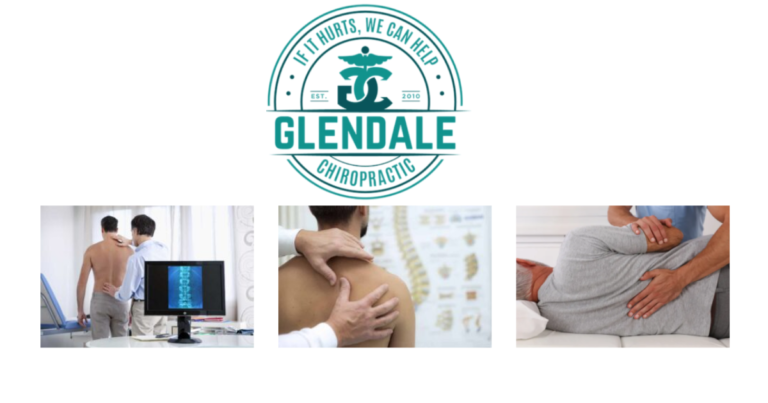In the world of healthcare, when we talk about getting better, chiropractic care is a big part of the conversation. Most people think of chiropractors as experts in fixing the spine through adjustments. But there’s a lot more to chiropractic care than just that.
Chiropractors use a whole range of methods and treatments beyond spinal adjustments to help people feel better. These additional therapies are like different tools in a toolbox, each serving a specific purpose in promoting health and wellness. Chiropractic care is built on the idea that the spine’s alignment affects how our bodies work. Adjustments, where chiropractors fix misalignments in the spine, are a major part of their work. But alongside these adjustments, they also use various other treatments and therapies to help people with pain, movement, and overall health.
Beyond the adjustments, chiropractors use things like massages, exercises, and ways to eat better to help the body heal. They believe that these extra therapies, when combined with adjustments, create a complete approach to keeping the body healthy and strong. These additional treatments, like exercises to make muscles stronger or advice on how to eat healthier, are all about making sure the body can heal itself and stay well. Chiropractic care isn’t just about fixing the body; it’s about teaching people how to live better and healthier lives.
In this exploration, we’ll delve into these various therapies and treatments that chiropractors use beyond adjustments. We’ll uncover the diverse tools and techniques they apply to support the body’s natural healing abilities and promote overall wellness. Through this journey, we’ll discover the depth and breadth of chiropractic care as a holistic approach to health and vitality.
The Foundation of Chiropractic Care
Central to chiropractic care is the understanding that the spine’s alignment profoundly influences the body’s function and health. Spinal adjustments, the hallmark of chiropractic practice, aim to correct misalignments, known as subluxations, and restore proper spinal function. By doing so, chiropractors seek to optimize nervous system function and support the body’s natural healing abilities. Visit our Youtube Channel for more on foundations of chiropractic care.
Beyond Adjustments: Additional Therapies and Treatments
While spinal adjustments form the cornerstone of chiropractic care, practitioners employ a diverse toolkit of supplementary therapies and treatments to address various musculoskeletal issues and enhance overall well-being.
Soft Tissue Therapies
Chiropractic care incorporates various soft tissue therapies to complement spinal adjustments. Techniques like myofascial release, massage therapy, and trigger point therapy target specific muscles and soft tissues affected by injuries or chronic conditions. These therapies aim to reduce muscle tension, improve circulation, and promote relaxation, contributing to pain relief and enhanced mobility.
Rehabilitation Exercises
A pivotal aspect of chiropractic care involves prescribing rehabilitation exercises tailored to individual needs. These exercises focus on strengthening muscles, improving flexibility, and restoring proper movement patterns. By actively engaging patients in their recovery, rehabilitation exercises play a crucial role in functional restoration and preventing future injuries.
Nutritional Counseling
Chiropractors often provide nutritional guidance as part of their holistic approach to health. They offer advice on diet, supplements, and lifestyle changes that can support the body’s healing process and promote overall well-being. Emphasizing the importance of proper nutrition in fostering optimal health, this aspect of chiropractic care aims to complement other treatments and enhance their effectiveness.
Lifestyle Modifications and Ergonomics
Chiropractic care emphasizes the significance of lifestyle modifications in promoting wellness. Practitioners educate patients about ergonomic principles, stress management techniques, and strategies for improving posture. By incorporating these modifications into daily life, individuals can mitigate the impact of repetitive stressors and maintain spinal health, contributing to long-term well-being.
Electrical Stimulation and Therapeutic Ultrasound
In some cases, chiropractors may utilize electrical stimulation or therapeutic ultrasound as adjunct therapies. These modalities help in reducing pain, decreasing inflammation, and facilitating tissue healing. Electrical stimulation aids in muscle relaxation and pain relief, while therapeutic ultrasound assists in tissue repair and promoting blood flow.
Mind-Body Techniques: Stress Management and Relaxation
Recognizing the intricate connection between mental and physical health, chiropractic care often incorporates mind-body techniques. Stress management practices, relaxation exercises, and mindfulness techniques are encouraged to reduce stress levels and promote a sense of overall well-being. By addressing mental health aspects, chiropractors contribute to a comprehensive approach to healing.
Evidence-Based Efficacy of Additional Therapies
Studies support the efficacy of these supplementary therapies and treatments in enhancing the outcomes of chiropractic care. Evidence suggests their effectiveness in reducing pain, improving functional outcomes, and supporting the body’s healing processes across various musculoskeletal conditions.
Integrative Healthcare Collaboration
Chiropractors often collaborate with other healthcare professionals to ensure comprehensive care for their patients. Working alongside physiotherapists, nutritionists, and other specialists, chiropractors contribute to a multidisciplinary approach that addresses diverse facets of health and well-being.
Patient-Centric Approach and Education
A defining aspect of chiropractic care lies in its patient-centric approach. Chiropractors prioritize patient education, empowering individuals to take an active role in their health. Through informative discussions, practitioners equip patients with the knowledge and tools necessary to make informed decisions about their well-being.
When it comes to feeling better, chiropractic care offers a whole toolbox of treatments beyond just adjusting the spine. These additional therapies and methods are like different tools that chiropractors use to help people get healthier.
Chiropractors believe that the spine’s alignment affects how the body works. Adjustments, where they fix the spine, are a big part of what they do. But they also use things like massages, exercises, and tips for eating better to help the body heal and stay well. By combining these different treatments, chiropractors create a complete way to keep the body healthy. It’s not only about fixing problems but also about teaching people how to live healthier lives.
As we’ve explored these diverse treatments in chiropractic care, we’ve seen how they work together to support the body’s healing abilities and improve overall wellness. This holistic approach doesn’t just focus on fixing one thing—it looks at the whole person, aiming to help them feel better and live a healthier life. Chiropractic care, with its variety of therapies, stands as a comprehensive way to promote well-being and vitality for everyone.

